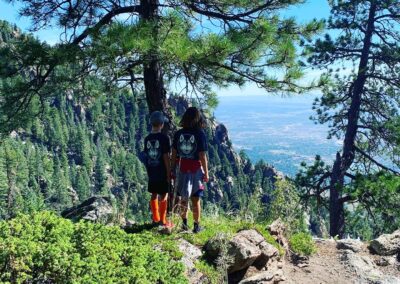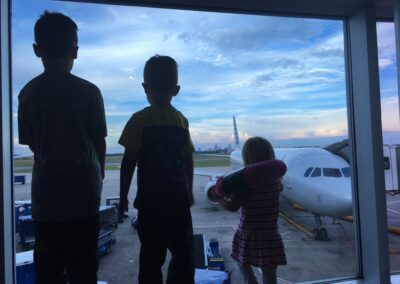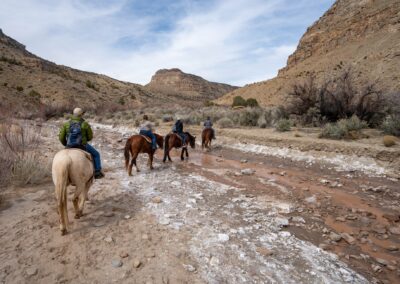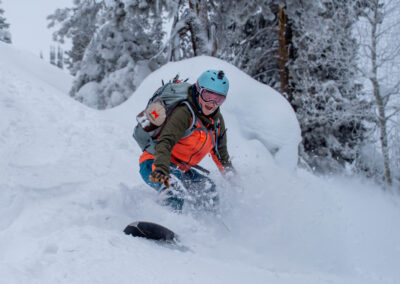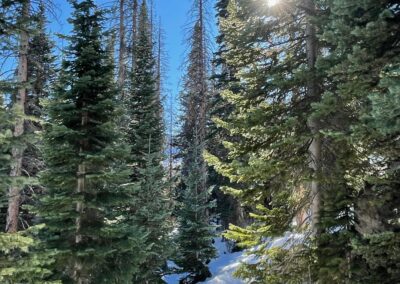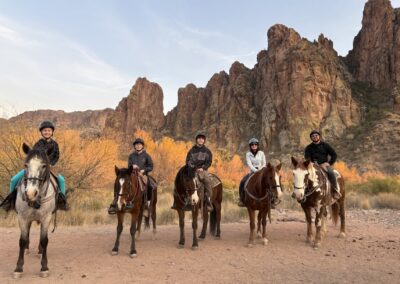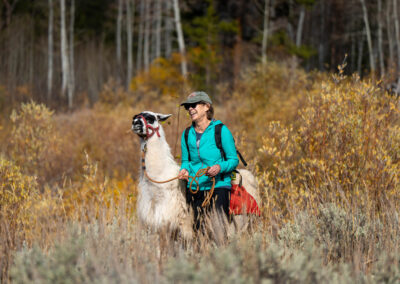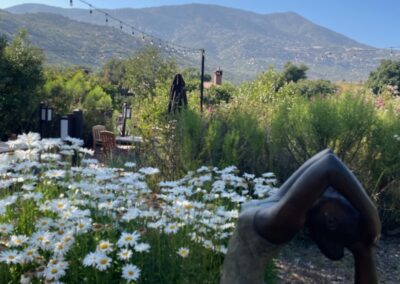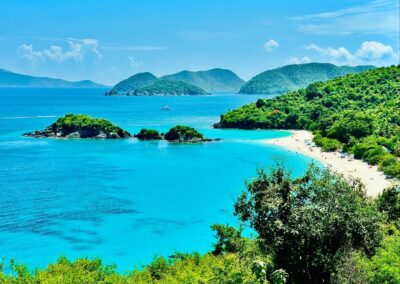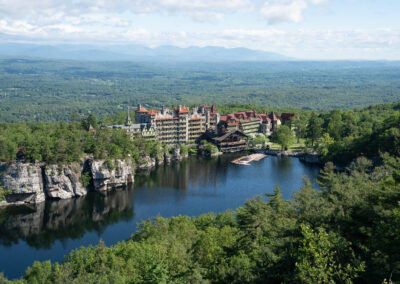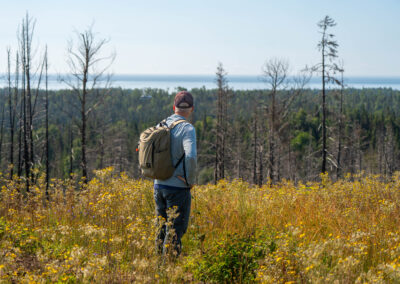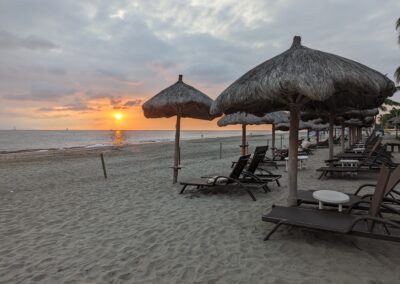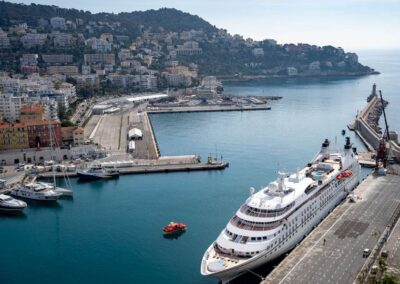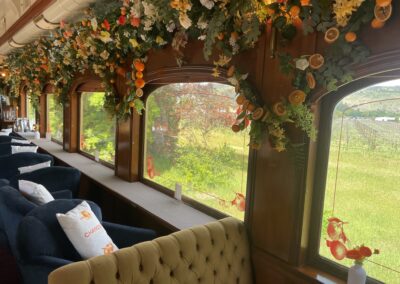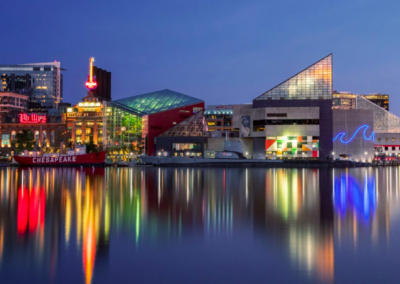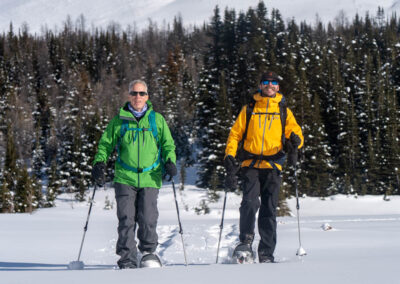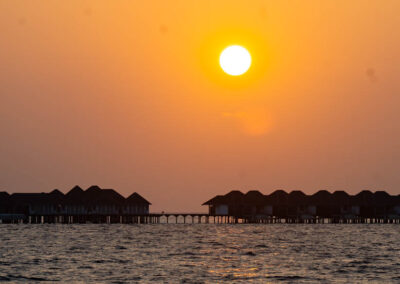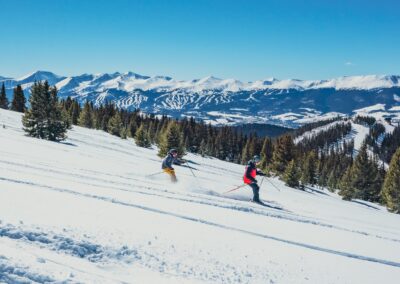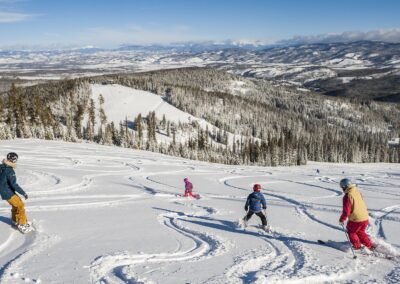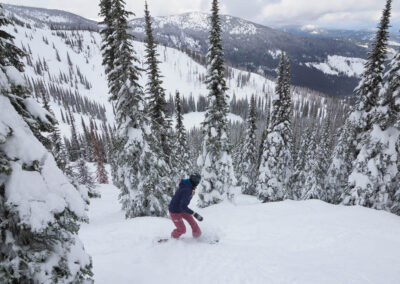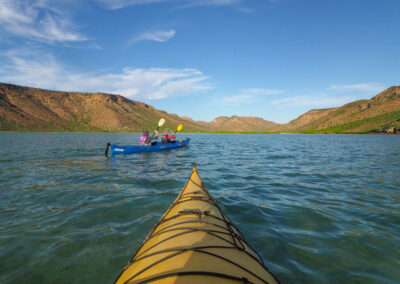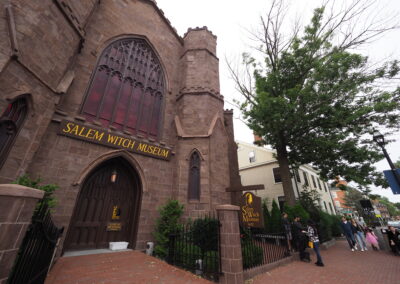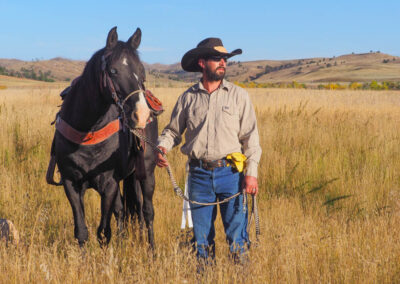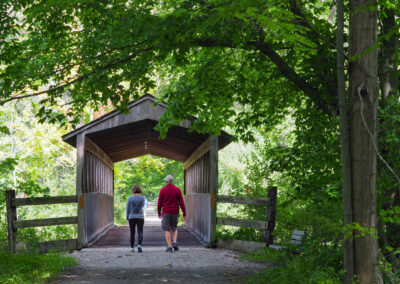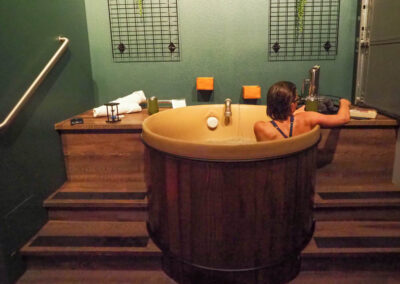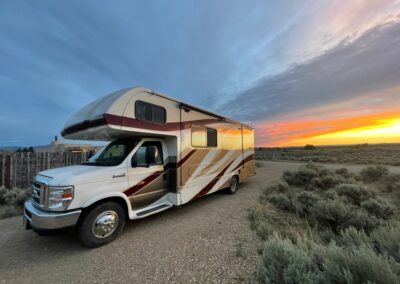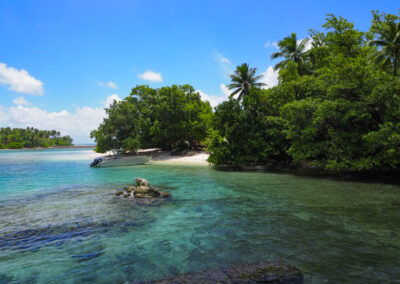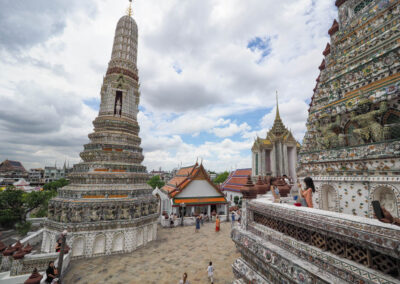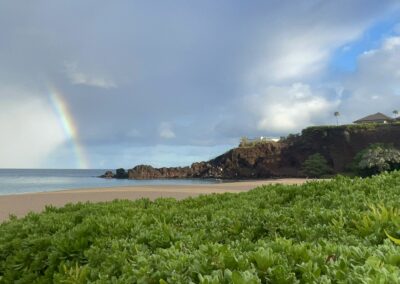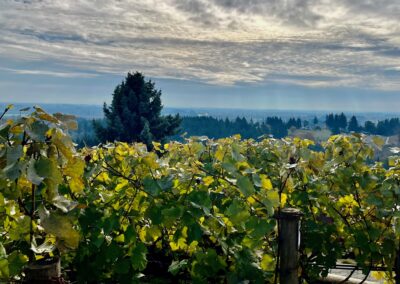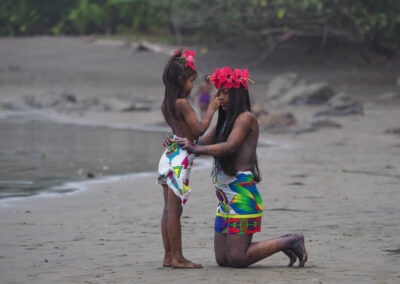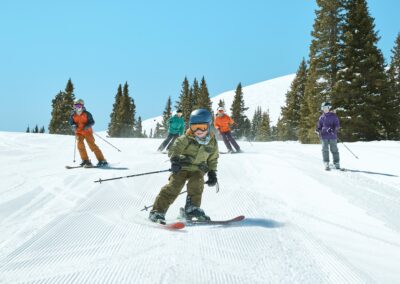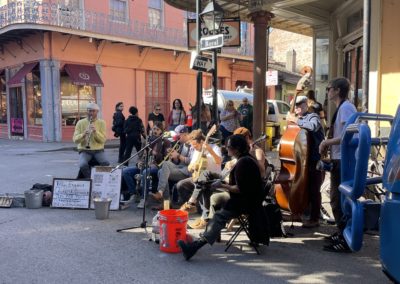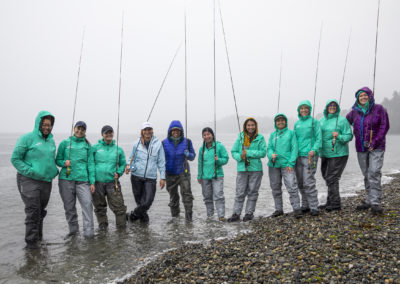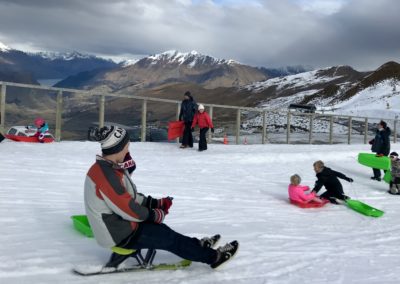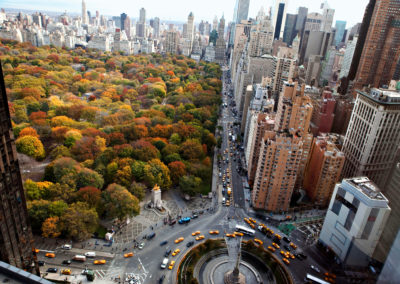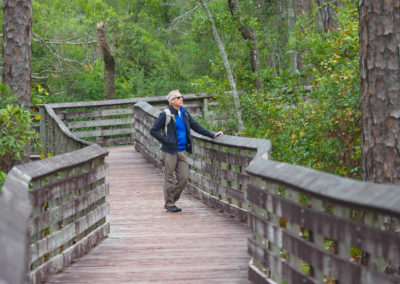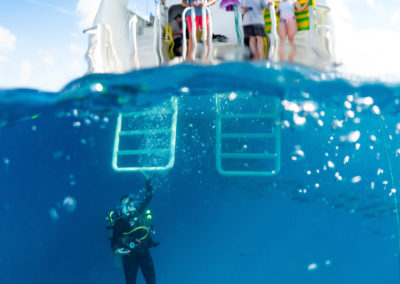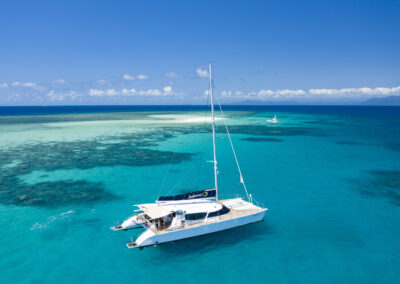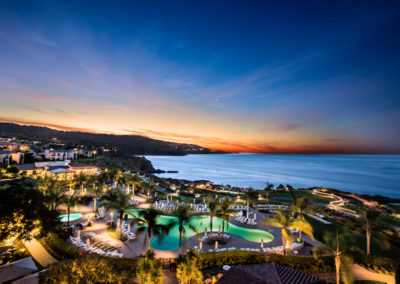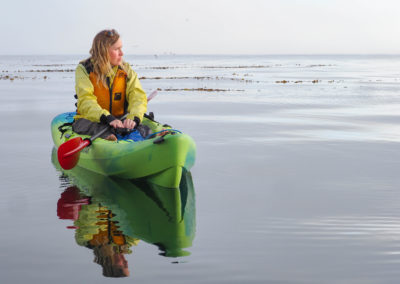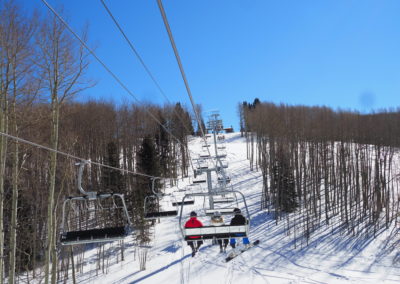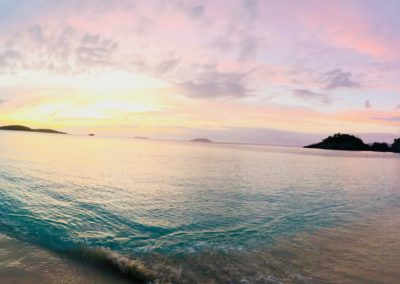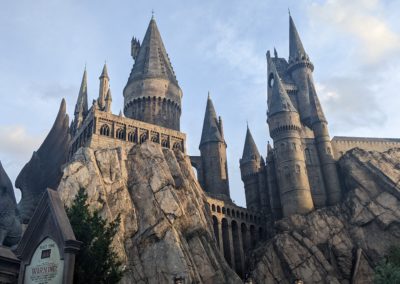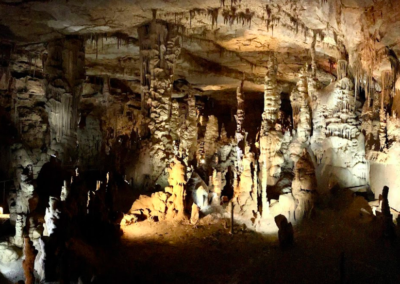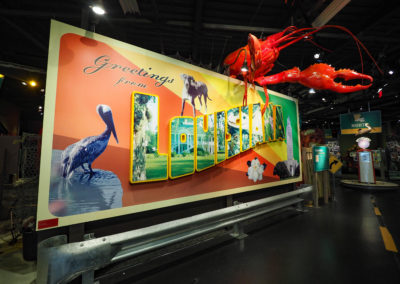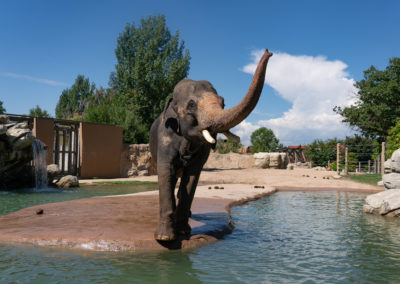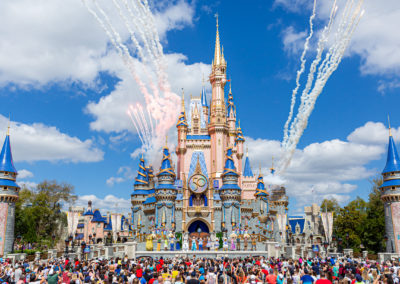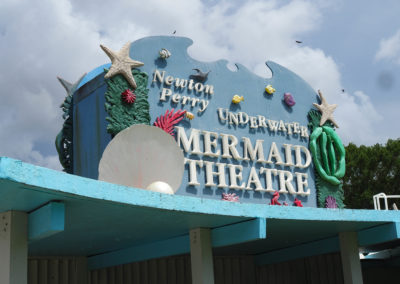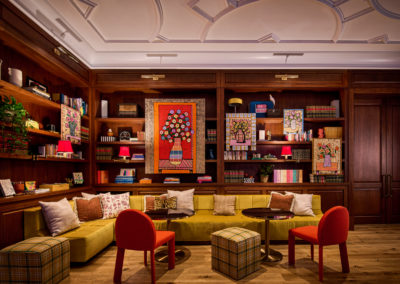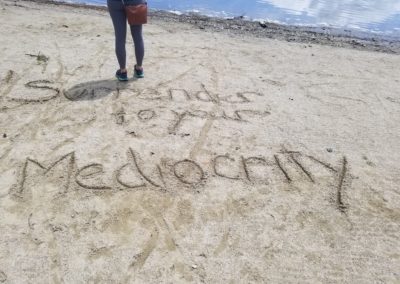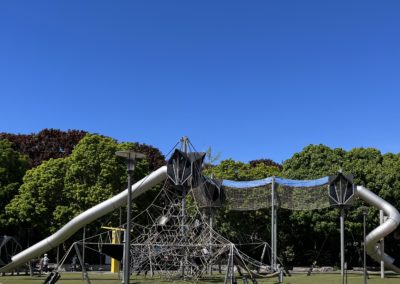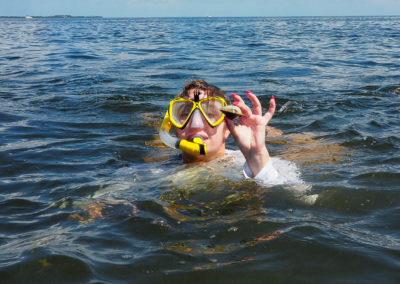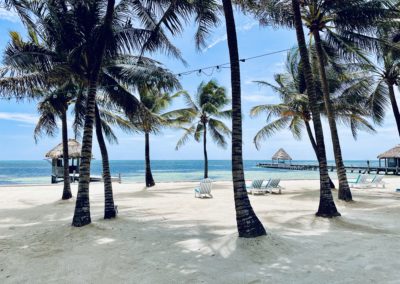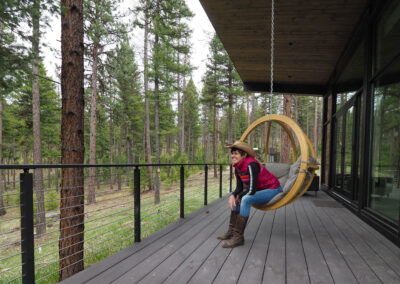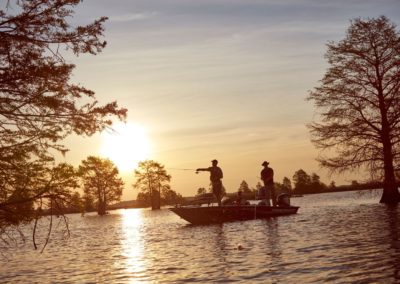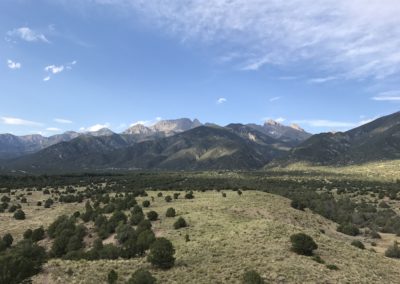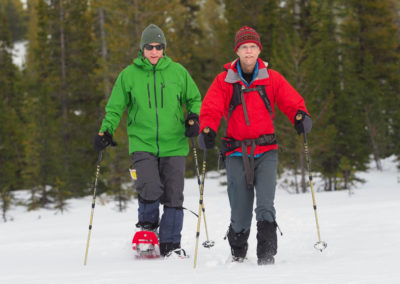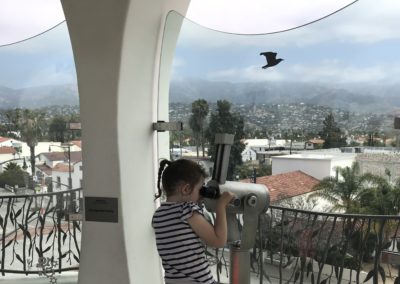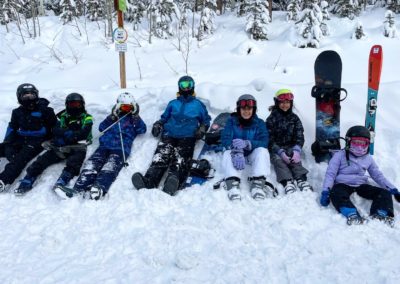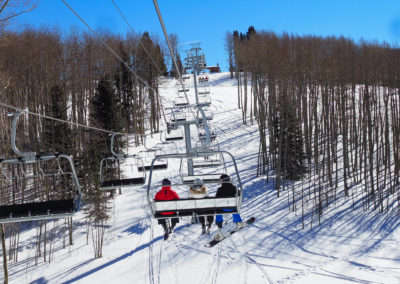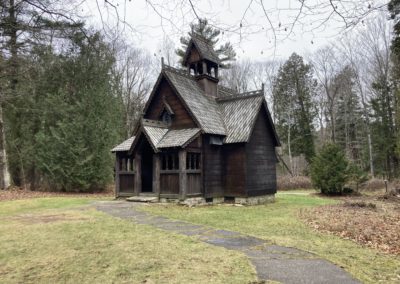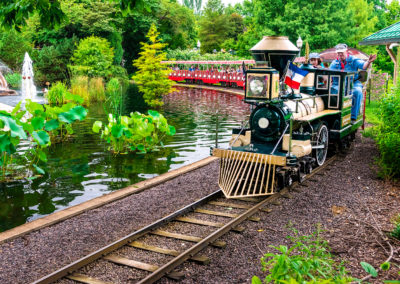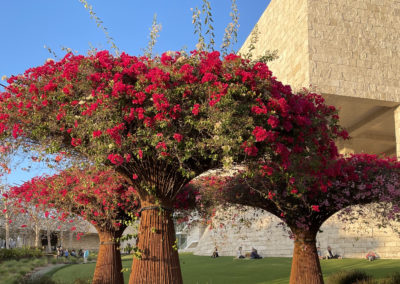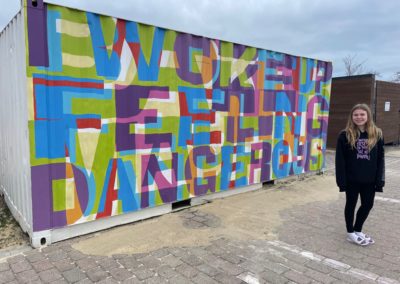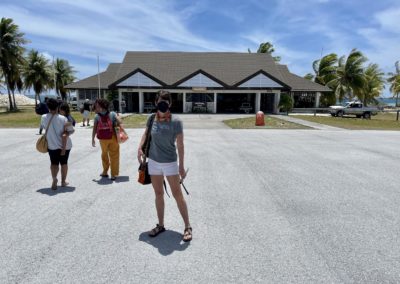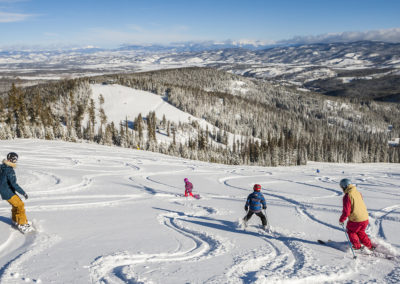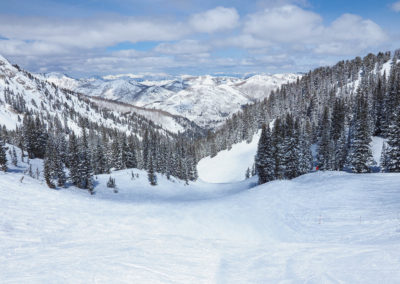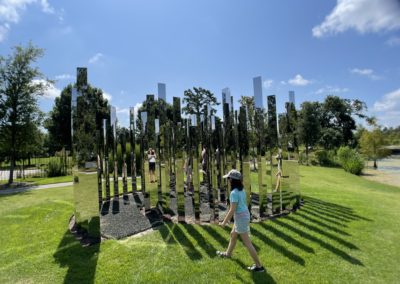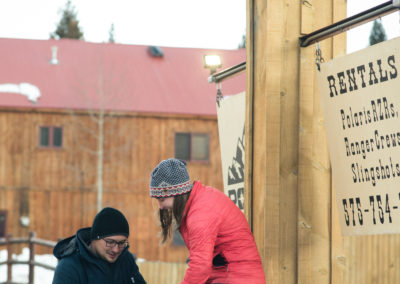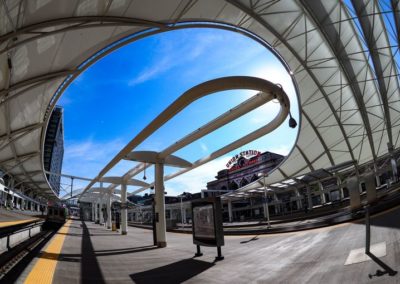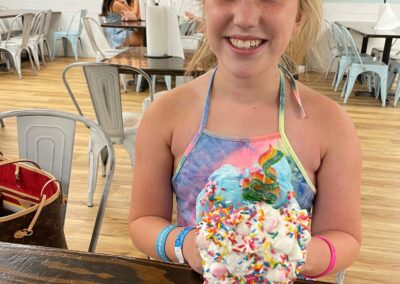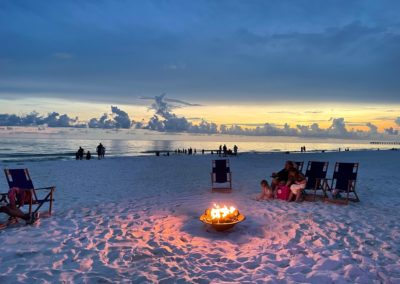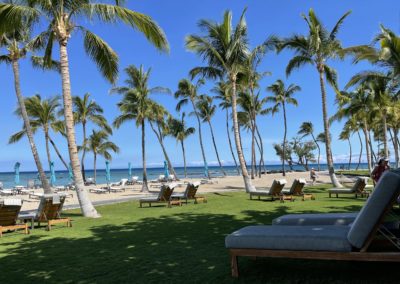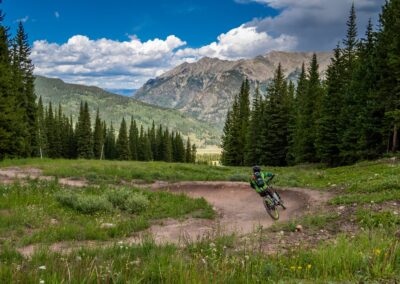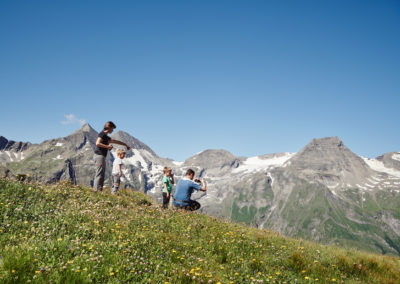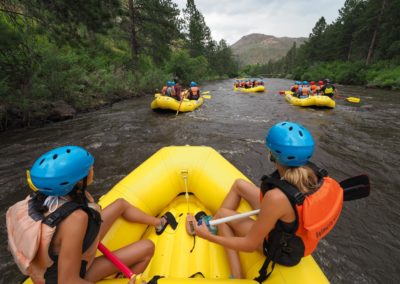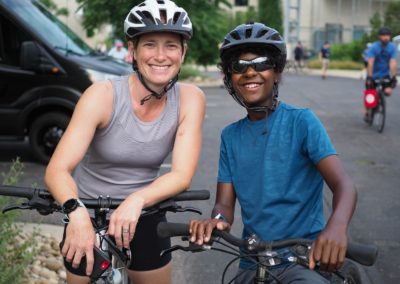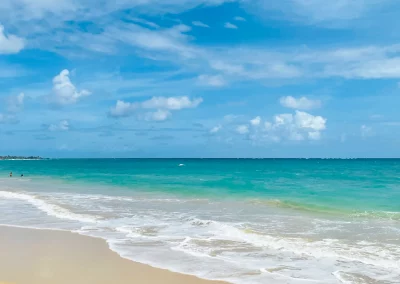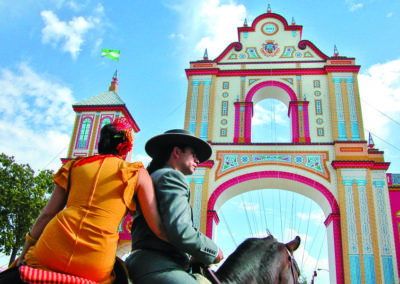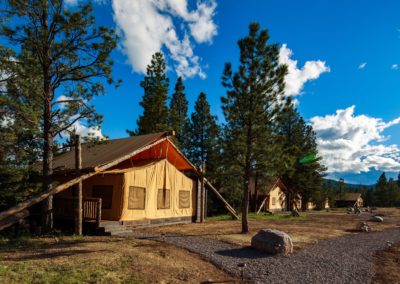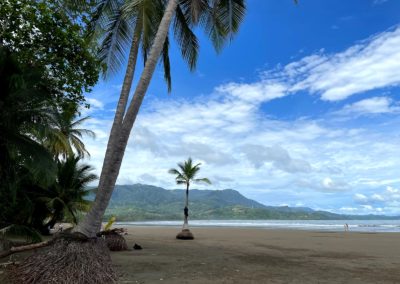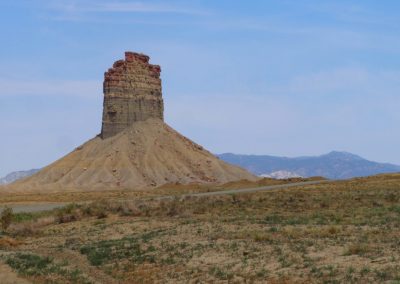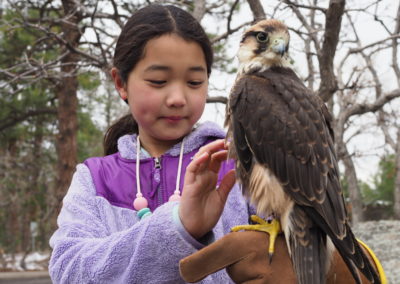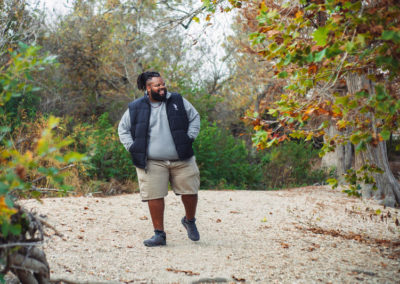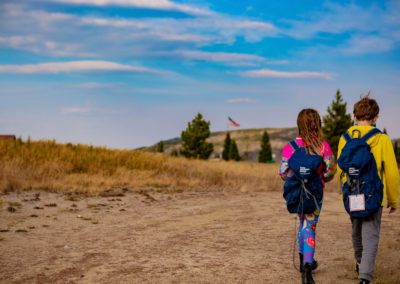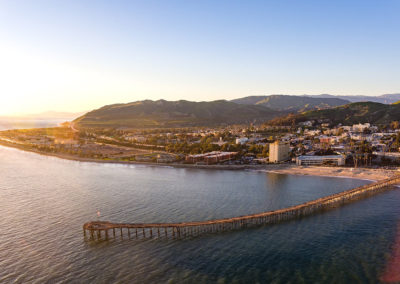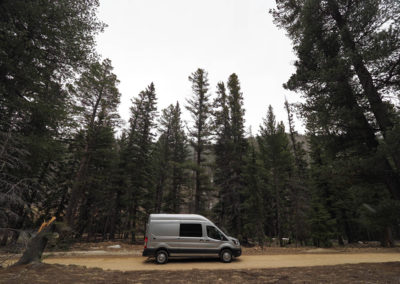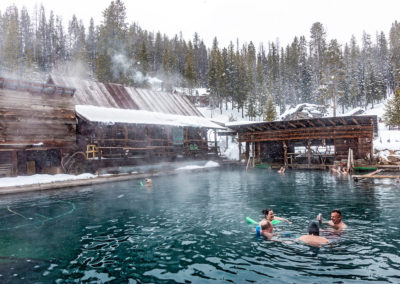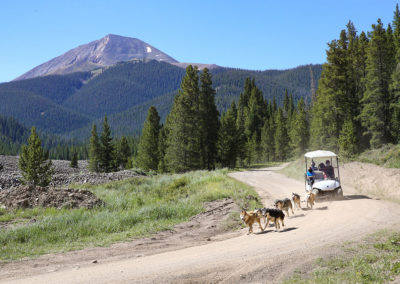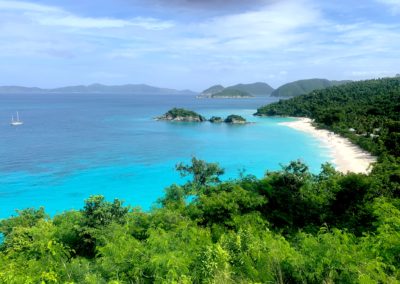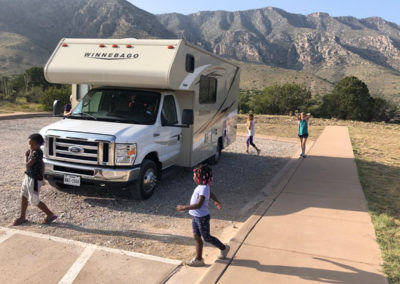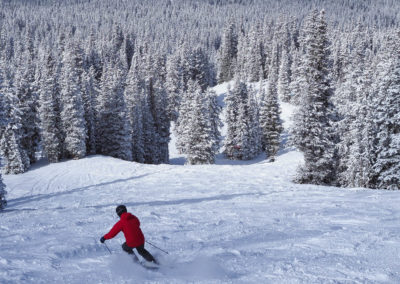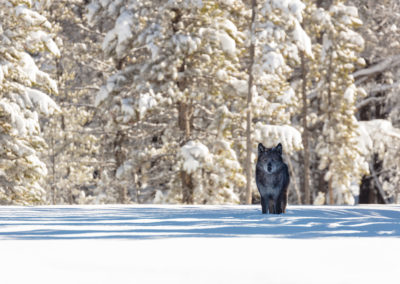It had always seemed like such a romantic idea––stealing off in an RV to visit national parks across the southwest.
Then, six months into staying home during the pandemic that changed the entire world, it started to become an obsession. In my dreams I would hear the crunch of gravel under tires and take in panoramic vistas unlike anything I had seen in real life. Pretty soon, the call of the open road could no longer be ignored.
We knew, of course, that traveling as we normally do with our family of eight was not possible during the pandemic. But as I started researching RV travel, the sights and sounds of my pandemic dreams started to seem within grasp. After all, if we rented a vehicle with its own bathroom and kitchen, our stops would be limited to getting gas, something we felt we could manage safely following COVID-19 protocols.
In late September, we rented a 25-foot Minnie Winnie from Outdoorsy, an Austin-based company that allows you to research and rent RVs, camper vans and travel trailers (think of it as an Airbnb for vehicles) and set out to see seven national parks in Texas, New Mexico and Arizona. From snapping photos of the kids with my dad, who also tagged along, in front of a mural that read “Greetings from Tarzan” (found in Tarzan, Texas, naturally) to marveling at the popcorn-like formations that covered the ceiling at Carlsbad Caverns to the unexpected glee that came with teaching myself to empty the RV’s gray- and black-water tanks, it was a trip we’ll never forget.
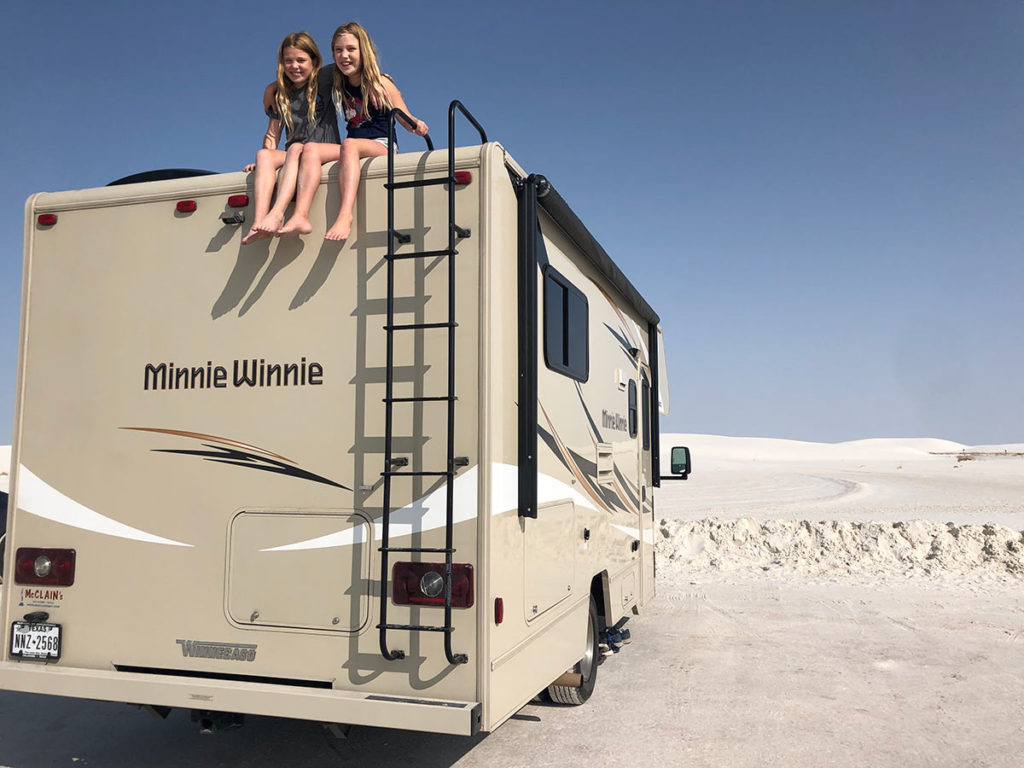
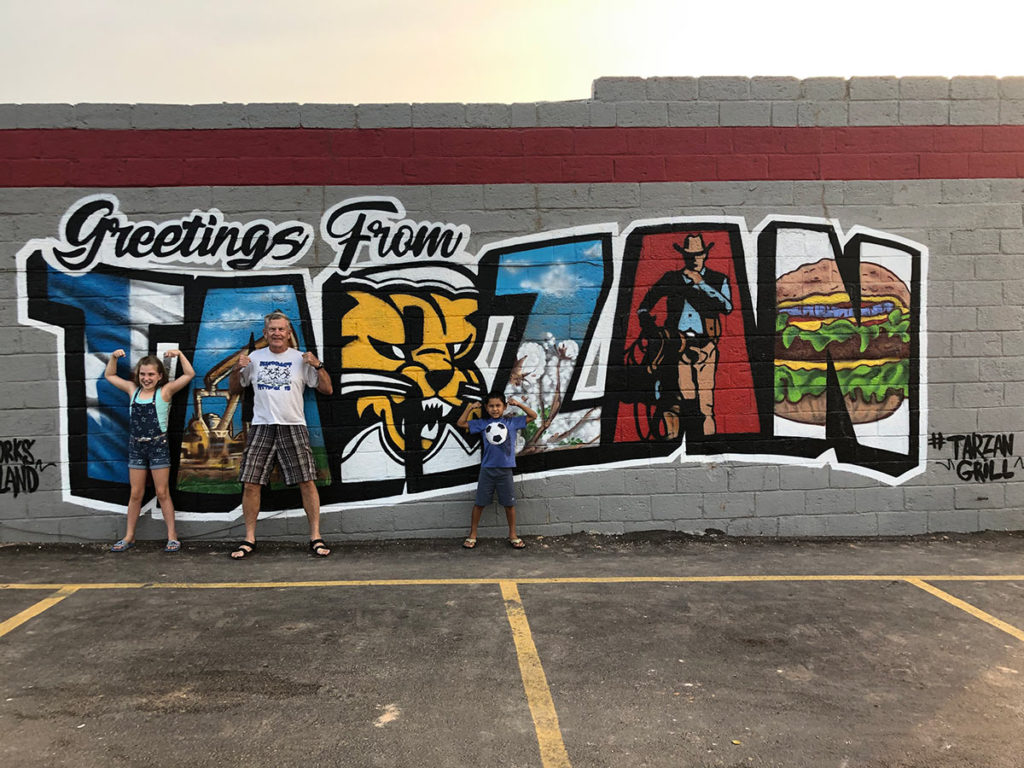
Day 1: Austin to Carlsbad, N.M.
It’s a nine-hour drive from Austin to Carlsbad, New Mexico, and we used this first day’s journey to get acclimated to aspects of RV life.
Our learning curve was steep, and we made many mistakes common to RV first-timers, such as forgetting to close cabinet doors all the way and watching in shock as the contents spilled out during a particularly sharp turn. Somewhere within the first few hours on the road, one of our kids also managed to lock us all out of the bathroom––something that was thankfully remedied quickly by my ever-prepared dad, who was following behind us in his truck and had a miniature screwdriver-turned-lock picker at the ready.
Despite our mishaps, it was also immediately clear what benefits RV travel could have for our family. Unlike when we drive in my car, where a fight erupts before we’ve even pulled out of our cul-de-sac, there were no squabbles because there was plenty of room to spread out. While our three older girls watched a DVD on the built-in TV by the loft bed, our three younger ones played Uno at the kitchen table. There was no need to stop for bathroom breaks because we had one available 24-7 (except for the aforementioned lockout), and meals and snacks were available anytime, too, in the kitchen.
Before long, daylight faded behind swaths of ranchland that flanked our journey and we found ourselves arriving at our center of operations for the next two nights––the Carlsbad KOA Holiday.
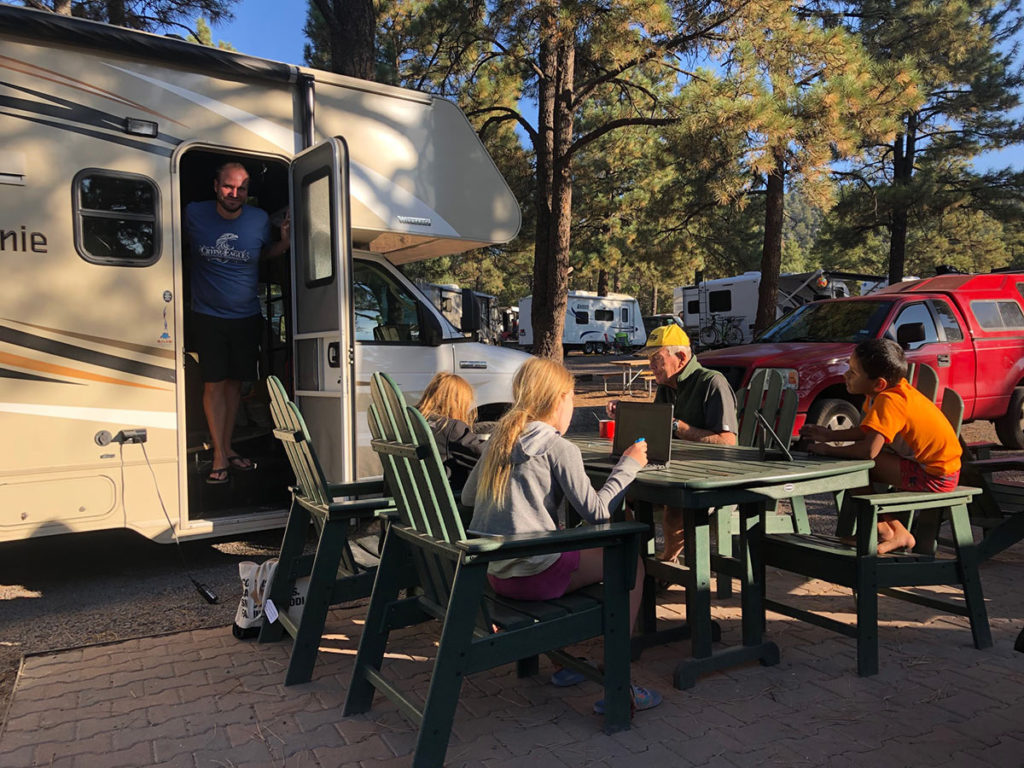
Day 2: Carlsbad Caverns and Guadalupe Mountains
If you’re ever feeling overwhelmed, consider some advice from a cave: “Breathe deep, search inward, seek beneath the surface, and hang tight.”
Offered on a T-shirt in the gift shop at Carlsbad Caverns National Park, this was just one bit of wisdom we gleaned during our adventure to this famous underground park, which is comprised of 100 caves including the spectacular Big Room, the largest limestone chamber in the Western Hemisphere.
Due to COVID-19, visitors were advised to arrive by 8:30 a.m. to receive a staggered entry time for later in the day. Despite arriving at 8 a.m. and waiting almost two hours for our entry time, the view from the Big Room, which spans almost 4,000 feet and is dotted with formations reminiscent of everything from freshly-popped popcorn to a magical fairy village to a giant lion’s tail, was well worth it, and the 56-degree temperatures were refreshing when paired with the late summer heat outside.
After the kids filled out their Junior Ranger booklets––the National Park service offers these booklets specific to each park––and were officially sworn in by a jovial employee named Ranger Rick, we enjoyed a PB&J lunch in the RV before heading to our second national park of the day, Guadalupe Mountains.
Located just across the New Mexico border, Guadalupe Mountains National Park is one of just two national parks in Texas––the other being Big Bend––and is just a 30-minute drive from Carlsbad Caverns. But while you can see them both in the same day as we did, I’d recommend against it, as both the visitor’s center and the gates to the spectacular McKittrick Canyon close at 4:30 p.m.
Home to the highest point in the state, the 86,000-acre Guadalupe Mountains, includes unbelievable vistas (thanks, McKittrick Canyon!) and ample learning opportunities, including the ruins of a stagecoach station stand and a one-room schoolhouse where a teacher in the 1930s taught eight students per month in exchange for $30, room and board and a horse. Even our youngest, Allie, was able to rebound quickly after being stung in the ear by a bee, thanks to the beautiful scenic distractions and a few funny stories from Grandpa.
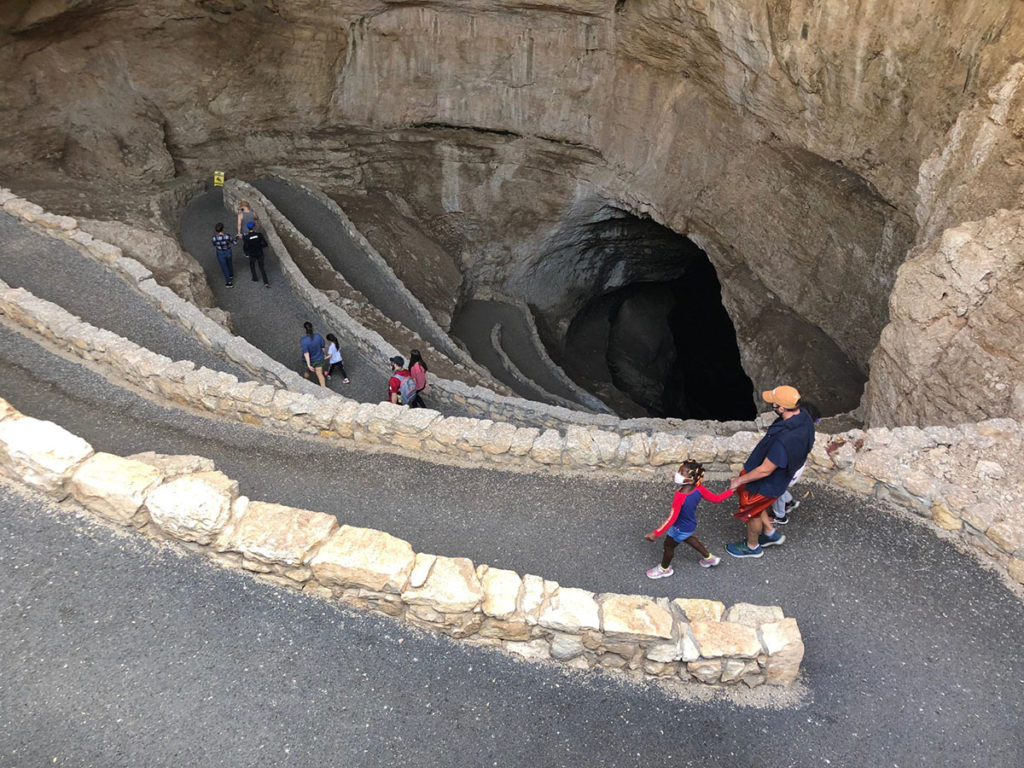
Day 3: White Sands and Saguro
I fully admit that my daily itineraries on this trip were sometimes overly packed, and this particular day was one in which I knew the soundtrack would be the hum of the open road.
My day started with a 4 a.m. wake-up call––no problem for the rest of our crew, who stayed fast asleep in their beds as I carefully navigated the RV out of our KOA campsite––to ensure that we would have plenty of time to spend at White Sands National Park, which was one of the parks I was most excited to visit.
Named a national monument in 1933, White Sands gained its national park status in 2019 and is famous for its rolling dunes and the endless white sand that’s nothing short of otherworldly.
Biking, hiking and driving tours are offered here, but the must-do activity for most visitors is sledding down the soft white gypsum dunes––think all the fun of snow sledding, without the snow. Zipping down the dunes on the plastic snow saucers we purchased from Amazon ahead of the trip was exhilarating, and watching everyone, from 4-year-old Allie to my 76-year-old dad get in on the fun was a memory I’ll never forget.
From White Sands, we trekked on to Saguaro National Park, which is located just under five hours away and, despite its relatively low-key nature, quickly became another favorite for the kids.
Saguaro National Park, is nestled in the Sonoran Desert and home to the largest cacti in the country, including the Centennial Saguaro, which first sprouted in 1916. The contrast of stoic, spiky greens and browns jutting up into the wispy blue and white sky was truly magical. Hiking and camping are the most popular activities at the park, which is comprised of two separate sections––an east side and a west side––located on either side of Tucson.
While you’re in the area, don’t miss the Pima Air and Space Museum, pimaair.org, which features a display of nearly 300 aircraft across 80 acres and is one of the world’s largest non-government-funded aerospace museums.
Following the two-hour drive to Scottsdale, our day was capped by our arrival to the JW Marriott Scottsdale Camelback Inn Resort and Spa, where tableside guacamole framed by string lights against the silhouette of the surrounding mountains was the perfect salve for our road-weary crew.

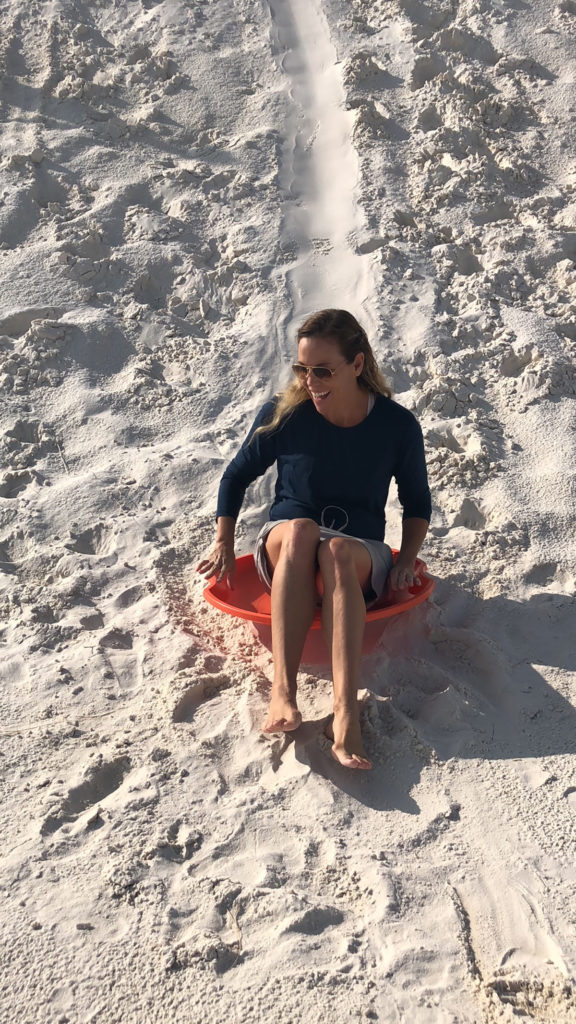

Day 4: Scottsdale
After four days of RV life, it’s fair to say that our two-night stay at the five-star JW Marriott Scottsdale Camelback Inn Resort and Spa, which affords panoramic views of both Mummy and Camelback Mountains, was well timed and well worth it. In fact, from its 32,000-square-foot Spa at Camelback Inn––which works the healing benefits of the surrounding Sonoran desert into its treatments––to its championship golf and tennis courts, this AAA Four Diamond property was among the most beautiful and well-appointed hotels I’ve ever visited.
After waking early to knock out some virtual schooling from our sprawling patio, we set out to explore Scottsdale, which is located next to Phoenix at the foot of the McDowell Mountains.
Ready for a break from PB&Js, we decided to take in a decadent breakfast on the patio at Farm & Craft, where our kids had fun adding their ideas to the chalkboard wall that offered the prompt “Love is” while the adults in our party savored dishes like the stuffed Breaky Burrito (scrambled eggs, white cheddar, sausage, avocado and fresh tomatillo salsa) and the Farm Scramble (chicken sausage, sweet potato, scrambled eggs and kale).
From there, we joined wife-husband team Monica and Kirk Nicodemus of JoyRidesAZ for a golf cart tour of Scottdale spotlighting everything from the Instagram-famous Old Town Scottsdale Cowboy to the Hotel Valley Ho, which first opened in 1956 and has been restored in recent years to its classic, contemporary roots. JoyRidesAZ also offers themed tours, such as a gelato tour and a “sip and shop.” Due to COVID-19, our golf cart was outfitted with a clear drop-down screen for added protection.
We finished out the day with dinner at the trendy tiki bar, Hula’s Modern Tiki, and dessert at Unbaked, where the edible cookie dough bar included gluten-free options.

Day 5: Scottsdale
Any day that starts with chocolate-chip pancakes drenched in marshmallow fluff, graham cracker dust, Nutella drizzle and campfire marshmallows is alright with me. And the s’mores pancake is just the tip of the iceberg at Hash Kitchen, which is also home to Lucky Charms French toast (thick-cut brioche French toast, whipped cream, Lucky Charms marshmallows and gold dust), a build-your-own Bloody Mary bar and creative mimosa flights.
Next, we headed to Saguaro Lake Guest Ranch, where we traded our RV for a one-hour horseback ride through the winding trails of the Sonoran Desert in the Goldfield Mountain Range. Amid the craggy desert landscape and the stunning saguaro cactuses, it was like stepping into the Old West. Kayaking, fishing, tubing and bird-watching are also offered at Saguaro Lake.
If you’re looking for a day hike, don’t miss the McDowell Sonoran Preserve, mcdowellsonoran.org. Just be sure to go early and take plenty of water, as temperatures can quickly reach the 100s.
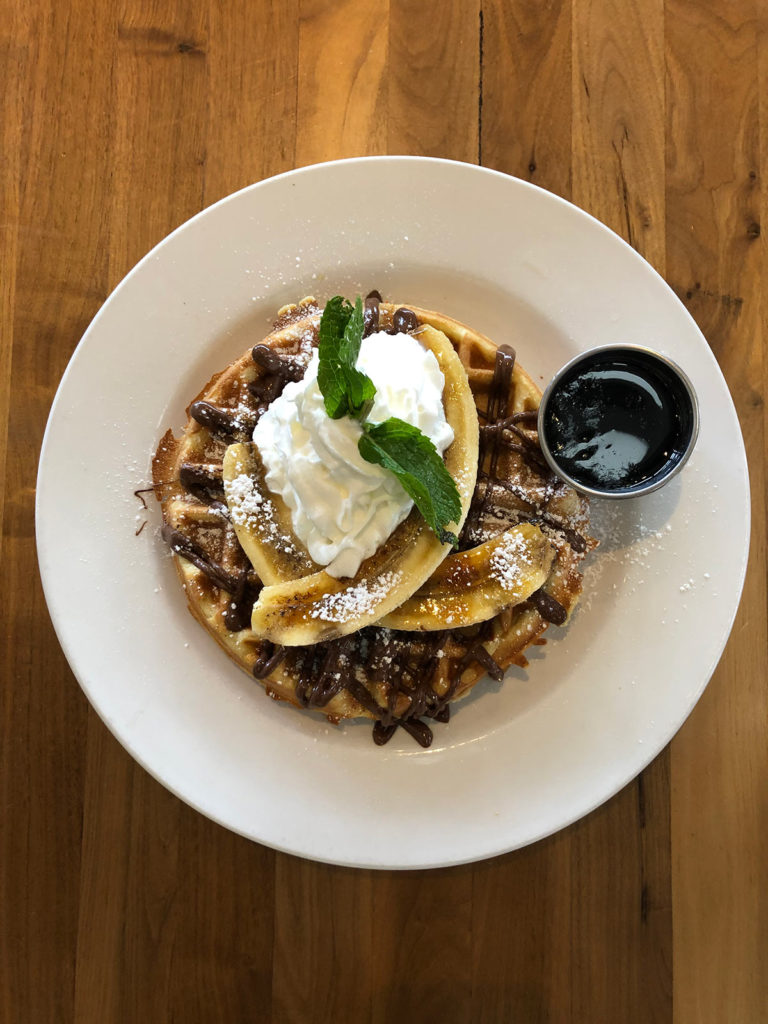 .
. 
Day 6: Williams, Ariz.
After our luxurious two-night stay at the JW Marriott Scottsdale Camelback Inn, it’s fair to say we didn’t want to leave, so we took our time in the morning before hitting the road for Williams, Ariz.
Williams is the most popular gateway to Grand Canyon National Park’s South Rim, with many travelers opting to stay in Williams and daytrip to the park on the Grand Canyon Railway. During much of the year, there’s a railway train that leaves at 9:30 a.m. and arrives at the South Rim’s Grand Canyon Depot, constructed in 1910, at 11:45 a.m. You can spend the afternoon enjoying the canyon, then head back to Williams at 3:30 p.m.
We opted to drive to the Grand Canyon instead of taking the train, but we enjoyed spending time in Williams, where quaint shops and restaurants pay tribute to the town’s Route 66 heritage. We also enjoyed a lingering dinner at the Grand Canyon Brewing Company, where we will long remember the hearty burgers, supple Bavarian pretzels and loaded mixed green salads.
Because of our early arrival into Williams, we also had time to enjoy our home for the night, the Williams/Circle Pines KOA Holiday. Well equipped with everything from a pool and a go-kart track to a playground, a jumping pillow and a mining station, all of my kids had fun––safely. No RV? No problem. This KOA also has cabins, wagons, tipis and tent sites.
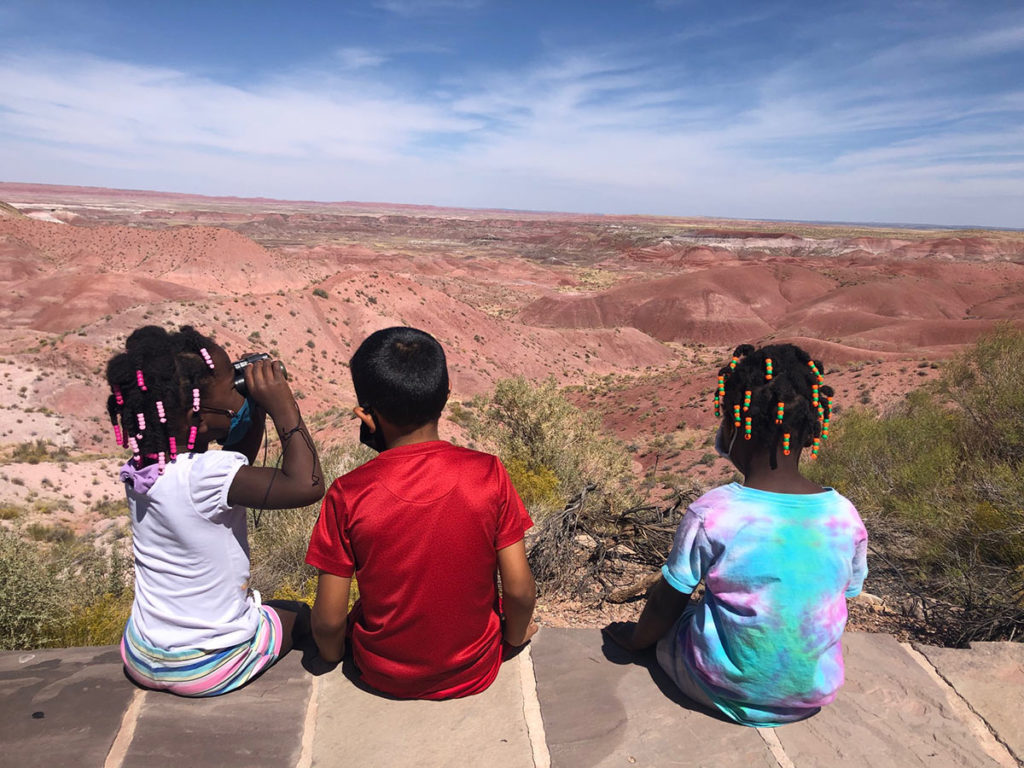
Day 7: Grand Canyon South Rim
It was difficult to believe that a brief five-minute walk from a parking lot could lead to one of the most magnificent views on the planet, but that was indeed the case at the South Rim of the Grand Canyon.
The Grand Canyon, was the second most visited national park in 2019 with nearly 6 million visitors, and nearly all of those visitors, with the exception of about 200,000, visited the South Rim.
Open all year, the South Rim affords many incredible access points for photos and also welcomes activities such as hiking, biking, scenic drives, mule rides, rafting trips and backcountry camping (permit required).
Days 8 and 9: Grand Canyon North Rim
Even though the North Rim is only 10 miles from the South Rim as the crow flies, it’s a five-hour drive between the North and South Rim villages. If you’re wondering if it’s worth the drive to visit both rims, I can assure you it is.
One of the advantages to visiting the North Rim during the pandemic, which, unlike the open-year-round South Rim, is only open May 15 to Oct. 15 annually, was that we were able to book an incredible western cabin at the Grand Canyon Lodge North Rim. (Typically, these cabins book up as soon as the reservations are released in Jan.)
I expected to hear complaints about the cabins, which come with rocking chairs on the porch but do not have TVs or WiFi access, from my kids, who range in ages from 4 to 12. But instead of playing games or texting friends, I found that they eagerly turned their eyes to the bright spread of stars above and the layers of oranges, reds and browns that stretched out as a panorama directly in front of our porch.
Our favorite part of the trip was an evening hike along the Bright Angel Point Trail, which is just a half-mile and offered views of the canyon that will forever remain etched in our memories. Our kids loved this hike so much that we took it over and over again, each arrival at the end of the trail offering different and equally as incredible perspectives.
Day 10: Petrified Forest and Albuquerque
Our final national park of the trip was Petrified Forest, which is located in northeastern Arizona and features everything from a Rainbow Forest comprised of bright, petrified wood to Newspaper Rock, where you’ll find more than 650 petroglyphs created by the ancestral Puebloan people who called this area home between 650 and 2,000 years ago.
The highlight, though, was getting to meet an actual working paleontologist, who was more than happy to answer questions about the fossils found in the park.
For our final night of the trip, we booked a pull-through site at the Albuquerque KOA, but first, we couldn’t resist the temptation to grab dinner on the patio at El Pinto, one of our favorite Albuquerque restaurants.
Run by twin brothers Jim and John Thomas––aka “the Salsa Twins”––the restaurant features New Mexican fare and a 25,000-square-foot outdoor patio that made distancing a breeze.
From the crackle of the hatch green chiles that were roasting out front to the tang of my perfectly crafted margarita, the patio offered a perfect place to reminisce about the events of the trip and to brainstorm where the call of the open road would take us next.
If You Go

Renting an RV:
We rented our RV from Outdoorsy, an Austin-based company that allows you to research and rent RVs, camper vans and travel trailers (think of it as an Airbnb for vehicles). You can search by dates, vehicle size, price and more. Outdoorsy.com
National Parks:
The National Parks Service offers an America the Beautiful annual pass for $80 that includes free admission for up to three adults as well as all other children in your group to all NPS parks as well as federal lands and waters. Have a fourth grader? You can get the pass for free. Research the options at usparkpass.com. Due to COVID-19, many parks have limited access; be sure to check individual park websites before you visit.

Stay:
We opted to stay at three different KOA Campgrounds on this trip because of the brand’s strong reputation and plentiful locations. We were in good company––according to staff at one location, Stevie Wonder had recently stayed there, too. koa.com

Insider tip:
In addition to the basics, here are some other items you might want to take on your RV road trip: swimsuit and goggles; backpack for hiking and day excursions; bottled water; towels and toiletries for the bathroom; bedding; kitchen utensils, pots and pans; groceries; coffee maker; board games and cards; sporting goods such as football, soccer ball and Frisbee; First Aid kit stocked with essentials including Dramamine; DVDs, chargers and a hotspot; sunscreen; bug spray; small tool box; umbrella and rain jackets; and, if you’re virtual schooling, school supplies like white boards, crayons, paper, tablets, laptops and chargers. Research the national parks you’re visiting, too, and bring along relevant items such as sleds, hiking boots or binoculars.








